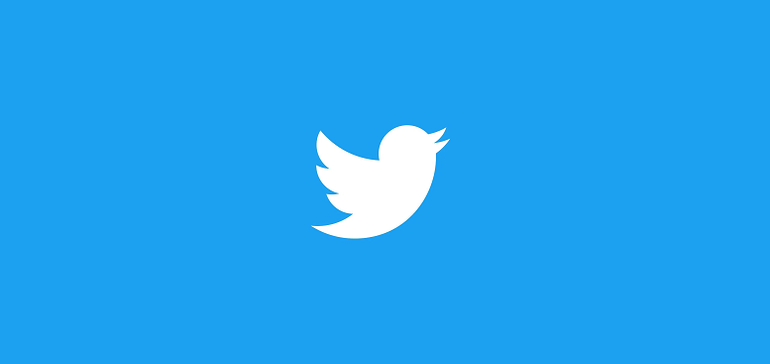Should you pause your Twitter ad campaigns?
Various reports have suggested that many brands are re-thinking their Twitter marketing approach, in light of Elon Musk’s takeover at the app, which has thus far seen him cut staff, and promote a new focus on free speech.
What that means for your business, specifically, will come down to your own perspective, but based on the reported changes at the app, it is worth considering where you stand on Twitter ads, and the potential risks, at present, of promoted tweets.
Here’s a look at some of the most recent changes at the app, and what they might mean for your approach.
Twitter is reinstating previously banned accounts
True to his word, Elon Musk is currently overseeing the reinstatement of over 62k previously suspended Twitter accounts, as part of what Musk is calling an ‘amnesty’ for past violations of Twitter’s rules.
The people have spoken.
Amnesty begins next week.
Vox Populi, Vox Dei.
— Elon Musk (@elonmusk) November 24, 2022
Many online safety experts have expressed concern with this approach, given that these users have previously been found to be sharing misinformation, engaging in harassment and abuse, running scams, etc. The proviso, as Musk notes, is that the users haven’t broken any laws, but even so, that’s a lot of profiles, with a lot of potential influence, that could be tweeting again very soon.
For reference, Platformer reports that one of the reinstated accounts has over 5 million followers, while 75 of them have over a million.
Again, that’s a lot of influence, while Musk has also reinstated the accounts of Donald Trump, Jordan Petersen, The Babylon Bee and various others that had previously been banned from the app for violations of its rules.
That seems like it could lead to a degradation of engagement in the app, which could have an impact on the user experience. And ad placement, within that, may be more of a concern.
Twitter has dumped its COVID misinformation policy
With the pandemic becoming a lesser priority, due to the broad roll-out of the COVID vaccine, as of November 23rd, Twitter has stopped enforcing its COVID-19 Misleading Information Policy, which had seen the app adding warning labels to some tweets, and suspending repeat offender accounts for sharing incorrect or misleading information about the outbreak.
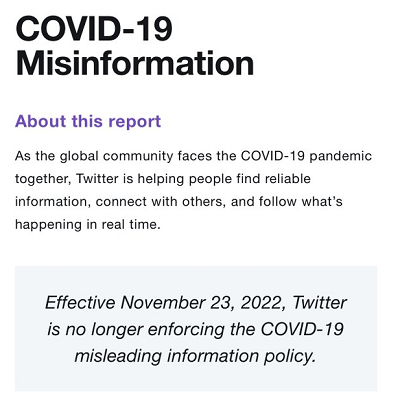
The impact of that will be variable, though it is worth noting that between January and September this year, Twitter removed over 23k tweets, and suspended more than 7k accounts, based on this policy.
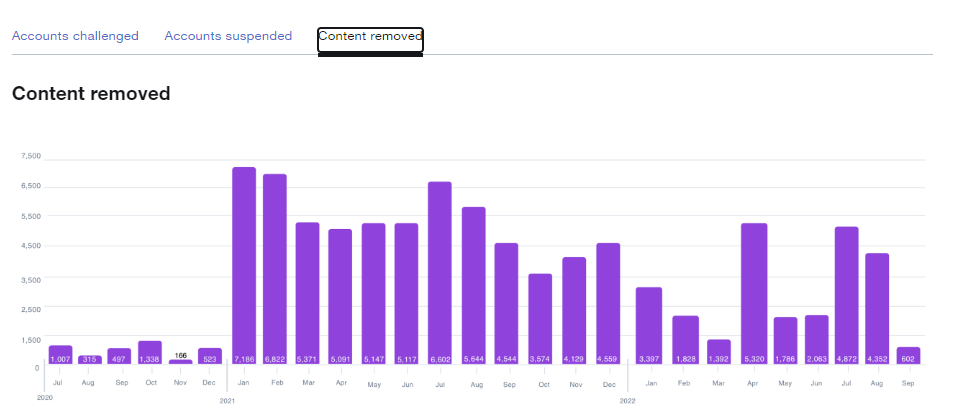
Though as you can see, that activity had dipped significantly by September, where only 602 total tweets were removed.
Worth noting, too, that Elon took over Twitter in October, and based on these numbers, such removals had declined significantly before then, so the decision to scale back its COVID misinformation policy may not be related to the Musk takeover directly.
But it is another element to consider, and with COVID cases surging once again, maybe Twitter could have held off on removing this for a little longer.
Twitter’s New $8 verification program will be available again shortly
Musk’s first major initiative at the app, which enables users to pay $8 per month to get a blue verification checkmark, is set to return as early as this week, with some new tweaks to make it more brand safe by providing extra protections against impersonation.
Specifically, the updated system will come with alternate color checkmarks for brands, individuals and government entities.
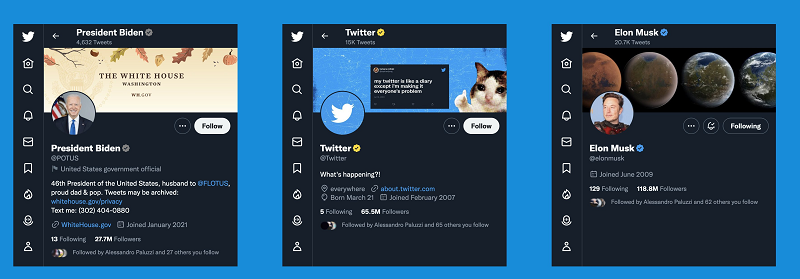
Will that fix the initial problems with the scheme?
The major problem with the first rollout of the program was that many users took the opportunity to dupe others by buying checkmarks and pretending to be the official accounts of brands and celebrities.
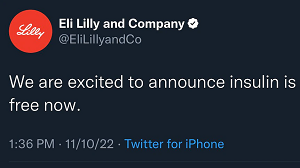
That sparked a lot of confusion, and while Twitter says that impersonations were ‘extremely rare’, it’s clear that there will be a period of adjustment, at the least, as users who don’t follow every news update and announcement try to work out what the heck these new colored ticks actually mean.
In summary, Twitter’s implementing new measures to combat impersonation as a result of users being able to buy a blue tick. But we won’t know, till it’s fully launched, what the impacts may be – while Musk has also flagged that brands will also have to pay $8 per month to maintain their blue checkmark in the app.
I can imagine that, once this is implemented, some brands won’t pay, and that could also lead to others looking to take their place, and register fake official Twitter handles in their name – so if the actual brand handle loses its tick, the replica gets it.
Again, Twitter is implementing checks and processes to avoid this. But with fewer staff, it’s hard to foresee how it’s going to be able to manage all of these elements at scale.
Twitter’s CSAM team for the Asia Pacific region is down to one employee
In a more concerning report, due to Twitter’s recent staff cuts, some areas of the business have been scaled back to bare bones, including the team responsible for detecting and removing child sex abuse material (CSAM) in the Asia Pacific region. According to Wired, this team is now down to one person, who’s responsible for managing the entire APAC region.
Musk has repeatedly noted that tackling CSAM is ‘priority #1’, and has tasked a team with combating the problem, specifically via the removal of related hashtags, which Twitter says has had some impact in slowing the spread of CSAM material. Experts have warned that the effects of such will be temporary, as perpetrators will simply move onto other tags – but again, hopefully Musk is serious about tackling the problem in a more cohesive way, which could have a bigger, more sustained impact.
But a single staffer for a region that’s home to around 60% of the world’s population doesn’t seem like enough.
On a similar front, there have also been reports that, due to reduced oversight at Twitter HQ, Chinese-controlled Twitter accounts were recently able to dominate certain trends and searches in the app, and effectively quash reports of ongoing protests.
As per Ars Technica:
“For hours, these tweets dropped Chinese city names where protests occurred into posts that were mostly advertising pornography and adult escort services. And it worked, preventing users attempting to search city names in Chinese from easily seeing updates on the protests. Researchers told The Post that the tweets were posted from a range of Chinese-language accounts that hadn’t been used for months or even years. The tweets began appearing early Sunday, shortly after protesters started calling for Communist Party leaders to resign.”
Twitter’s still in the process of re-establishing its full staffing needs, and hopefully, these are not indicative of ongoing issues at the app.
—
As noted, the decision on whether to advertise on Twitter or not at this stage will come down to your brand, and your perspective on what’s happening at the app, and whether you feel that this has some bearing on ad placement, association, etc.
There are clearly still opportunities to reach broad audiences in the app, with Twitter reporting record levels of engagement and sign-ups as a result of the renewed interest that Musk has brought to the platform. There may even, potentially, be even more opportunity for ad reach than ever, with some of the big advertisers pausing their campaigns – but it is worth considering what’s happening at the app, and what that could mean for your efforts.

